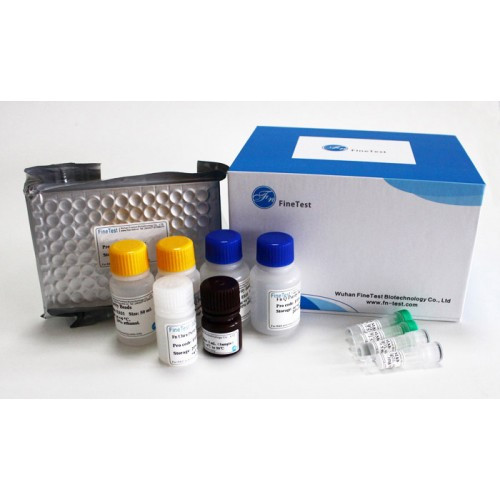Product Description
Recombinant Human 5'-AMP-activated protein kinase subunit gamma-2 (PRKAG2) is available at Gentaur for Next week Delivery.
Gene Name: PRKAG2
Alternative Names : H91620p
Expression Region : 1-328aa
AA Sequence : MLEKLEFEDEAVEDSESGVYMRFMRSHKCYDIVPTSSKLVVFDTTLQVKKAFFALVANGVRAAPLWESKKQSFVGMLTITDFINILHRYYKSPMVQIYELEEHKIETWRELYLQETFKPLVNISPDASLFDAVYSLIKNKIHRLPVIDPISGNALYILTHKRILKFLQLFMSDMPKPAFMKQNLDELGIGTYHNIAFIHPDTPIIKALNIFVERRISALPVVDESGKVVDIYSKFDVINLAAEKTYNNLDITVTQALQHRSQYFEGVVKCNKLEILETIVDRIVRAEVHRLVVVNEADSIVGIISLSDILQALILTPAGAKQKETETE
Sequence Info : Full Length of Isoform B
Tag Info : N-terminal 6xHis-tagged
Theoretical MW : 41.5 kDa
Storage Buffer : Tris/PBS-based buffer, 5%-50% glycerol. If the delivery form is lyophilized powder, the buffer before lyophilization is Tris/PBS-based buffer, 6% Trehalose, pH 8.0.
Endotoxin Level : Not tested-
Biological Activity : Not tested
Storage : Short term: -20°C; Long term: -80°C. Minimize freeze and thaw cycles.
Research Area : Cardiovascular
Restriction : For Research Use Only. Not for use in diagnostic procedures, drug use, or for administration to humans or animals.
Relevance : AMP/ATP-binding subunit of AMP-activated protein kinase (AMPK), an energy sensor protein kinase that plays a key role in regulating cellular energy metabolism. In response to reduction of intracellular ATP levels, AMPK activates energy-producing pathways and inhibits energy-consuming processes: inhibits protein, carbohydrate and lipid biosynthesis, as well as cell growth and proliferation. AMPK acts via direct phosphorylation of metabolic enzymes, and by longer-term effects via phosphorylation of transcription regulators. Also acts as a regulator of cellular polarity by remodeling the actin cytoskeleton; probably by indirectly activating myosin. Gamma non-catalytic subunit mediates binding to AMP, ADP and ATP, leading to activate or inhibit AMPK: AMP-binding results in allosteric activation of alpha catalytic subunit (PRKAA1 or PRKAA2) both by inducing phosphorylation and preventing dephosphorylation of catalytic subunits. ADP also stimulates phosphorylation, without stimulating already phosphorylated catalytic subunit. ATP promotes dephosphorylation of catalytic subunit, rendering the AMPK enzyme inactive.
Function : AMP/ATP-binding subunit of AMP-activated protein kinase (AMPK), an energy sensor protein kinase that plays a key role in regulating cellular energy metabolism. In response to reduction of intracellular ATP levels, AMPK activates energy-producing pathways and inhibits energy-consuming processes
Involvement in disease : Wolff-Parkinson-White syndrome (WPWS); Cardiomyopathy, familial hypertrophic 6 (CMH6); Glycogen storage disease of heart lethal congenital (GSDH)
Subcellular location :
Protein Families : 5'-AMP-activated protein kinase gamma subunit family
Tissue Specificity : Isoform B is ubiquitously expressed except in liver and thymus. The highest level is detected in heart with abundant expression in placenta and testis.
Paythway : Adipocytokinesignalingpathway
Uniprot ID : Q9UGJ0
 Euro
Euro
 British Pound
British Pound
 US Dollar
US Dollar








